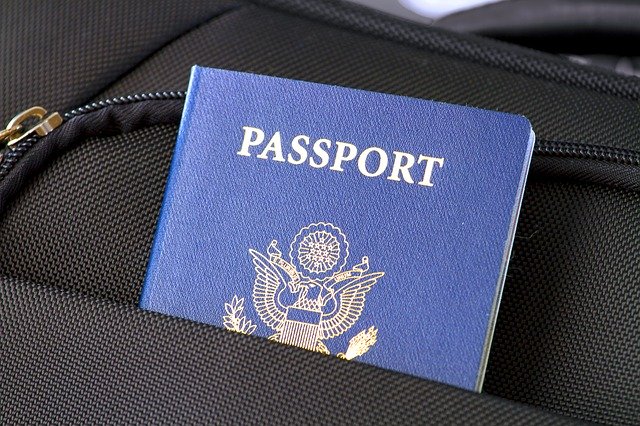Running a Private Container Registry with Token Authentication
Published on 25 Mar 2020Tags #Docker #Container #Security
When authenticating against a container registry, the user only supplies username and password. But in the background, Docker daemon and registry are using token authentication. This post demonstrates how to build a registry with a separate authentication service for token authentication.

As of version 2 of the registry specification, token authentication is supported but in integrated into the registry. Instead, the registry relies on an external authentication service like docker_auth.
The components in this setup are…
- the client, represented by Docker CLI and Docker daemon,
- the registry
- the authentication service, implemented by
docker_auth
Let’s prepare for token authentication
We need to prepare the environment by generating a self-signed certificate. It is required as part of the process because the token is signed by the authentication service. Please note that the use of a self-signed certificate must not be used in production. In this case, it easily demonstrates how the components work together.
# Generate certificates
mkdir -p docker_auth_certificates
openssl req \
-newkey rsa:4096 \
-nodes \
-keyout docker_auth_certificates/server.key \
-x509 \
-days 365 \
-out docker_auth_certificates/server.pem \
-subj "/C=EU/ST=Germany/L=Freiburg/O=registry/CN=localhost"
The authentication service docker_auth requires a configuration file. In this case, it suffices to use the simple example in which the path to the certificate and private key have been substituted:
# Fetch sample configuration
mkdir -p docker_auth_config
if [[ ! -f docker_auth_config/simple.yml ]]; then
curl --fail --location --output docker_auth_config/simple.yml https://github.com/cesanta/docker_auth/raw/master/examples/simple.yml
fi
sed -i 's|/path/to/|/ssl/|g' docker_auth_config/simple.yml
Let’s build this as a pod
I have recently published a post about building a pod using Docker. As Docker does not implement the concept of a pod, some magic is required to create a pod. In essence, a pod is a set of containers sharing the network namespace.
The first step is creating a container to represent the pod. It also specifies the port publishings required for the registry (port 5000) and the authentication server (port 5001). The authentication service must be published because the client must be able to contact it to retrieve a token.
# Start pod
docker run -d \
--name registry-pod \
--publish 127.0.0.1:5000:5000 \
--publish 127.0.0.1:5001:5001 \
alpine sh -c 'while true; do sleep 10; done'
Next we start the authentication service responsible for creating tokens for authenticated users. The containers joins the network namespace created by the first container. The volumes are required to provide the configuration as well as the certificate to the authentication server.
# Start docker_auth
docker run -d \
--name registry-auth \
--network container:registry-pod \
--mount type=bind,src=$(pwd)/docker_auth_config,dst=/config,readonly \
--mount type=bind,src=$(pwd)/docker_auth_certificates,dst=/ssl,readonly \
--env TZ=Europe/Berlin \
cesanta/docker_auth:1 --v=2 --alsologtostderr /config/simple.yml
Now it is time to start the registry. It must be configured to use an external authentication service. The registry must be able to validate the token prosented by the client. Therefore, is requires a root certificate to verify the signature in the token. The registry can be configured using a configuration file or environment variables. In this case, environment variables are the besser choice because only a few options must be overwritten to configure the connection to the authentication service.
# Start registry
docker run -d \
--name registry-registry \
--network container:registry-pod \
--mount type=bind,src=$(pwd)/docker_auth_certificates,dst=/ssl,readonly \
--env TZ=Europe/Berlin \
--env REGISTRY_AUTH=token \
--env REGISTRY_AUTH_TOKEN_REALM=https://localhost:5001/auth \
--env REGISTRY_AUTH_TOKEN_SERVICE="Docker registry" \
--env REGISTRY_AUTH_TOKEN_ISSUER="Acme auth server" \
--env REGISTRY_AUTH_TOKEN_ROOTCERTBUNDLE=/ssl/server.pem \
registry:2
Let’s test authentication
As soon as the components are successfully running, a few simple tests are in order to check they are operating correctly.
The first test is only meant to check the response for the WWW-Authenticate header which points to the authentication service on https://localhost:5001/auth. Even when the header is correct, the commands fails because the HTTP return code is 401 (authorization required).
curl --silent --verbose http://localhost:5000/v2/
To test the whole process of authenticating against docker_auth, the Docker CLI will contact the authentication service specified in the WWW_Authenticate header and obtain a token using the specified username and password.
docker login --username admin --password badmin localhost:5000